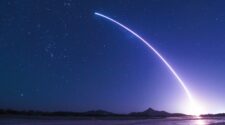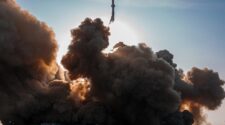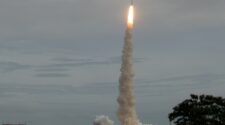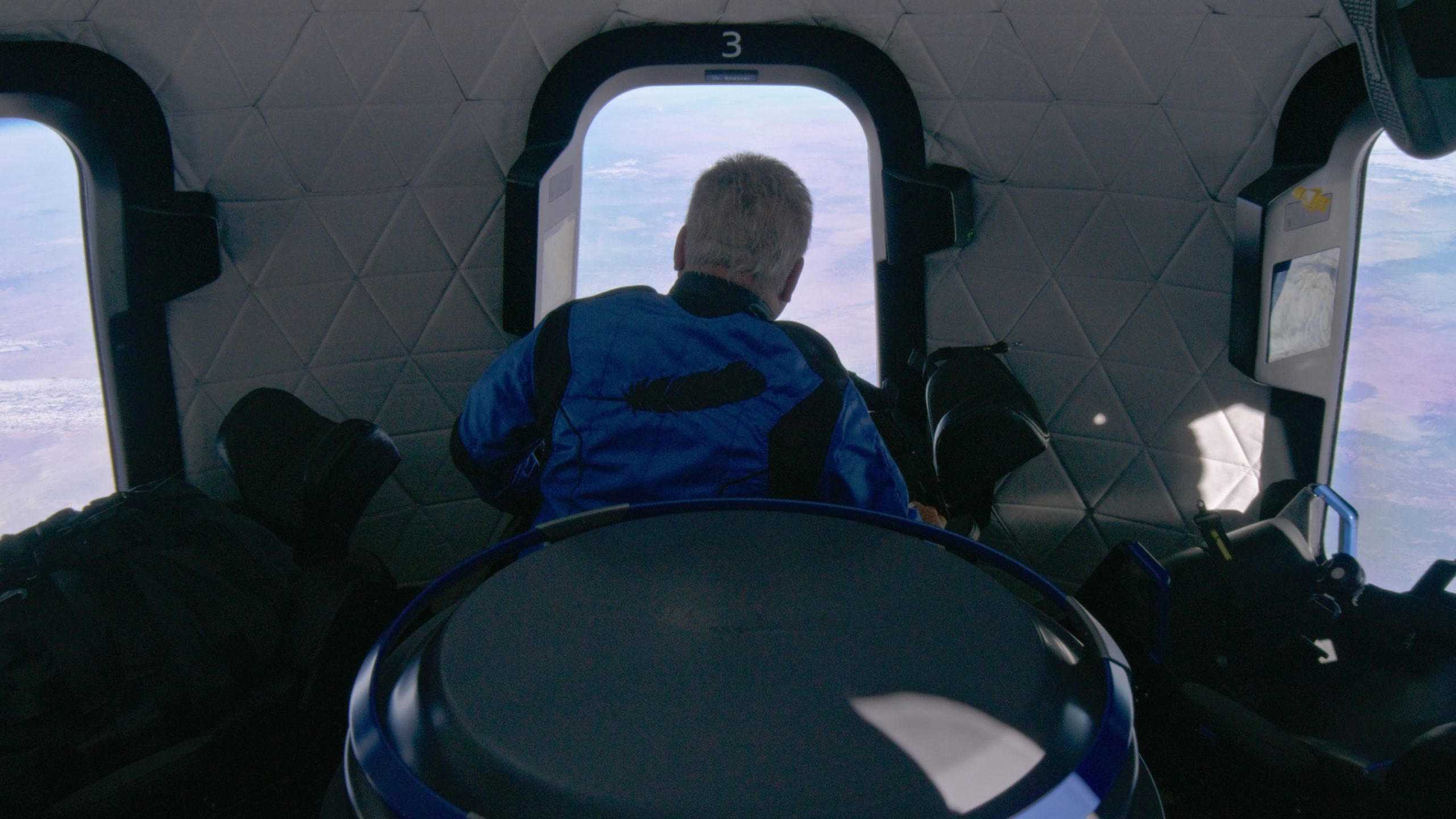
William Shatner, aka Capt. James T. Kirk of Star Trek, launched to space successfully on the morning of Wednesday, Oct. 13, 2021, riding along on an emotional journey to the final frontier as the oldest the human ever. Shatner was invited aboard Blue Origin’s New Shepard rocket whose development was financed by billionaire Jeff Bezos rocket. He emerged profoundly changed by the experience after safely landing.
The world-famous actor turned science fiction into science fact by ‘boldly going’ to the edge of space in reality, where few have gone before aboard the ‘RSS First Step’ after having acted in many space adventures throughout his illustrious and lengthy career.
In total to date, less than 600 humans have been to outer space.
Shatner was overwhelmed. Post-landing he spoke the most emotionally heartfelt commentary I’ve ever heard from any astronaut about why we all need to go to space and see the fragile Earth to preserve its beauty and save it from destruction and pollution.
“Everybody in the world needs to see this,” Shatner said in joyful thanks to Jeff Bezos in post landing remarks.
He was profoundly changed – saying We’re protected only by a very thin line between the blue atmosphere and the blackness of space he equated to death.
“It was unbelievable, unbelievable. … To see the blue air cover go whip by and you’re staring into blackness, that’s the thing. The covering of blue, this sheet, this blanket, this comforter of blue that we have around us, we think oh, that’s blue sky and then suddenly you shoot through it all as though you whip off a sheet when you’re asleep, and you’re looking into blackness.”
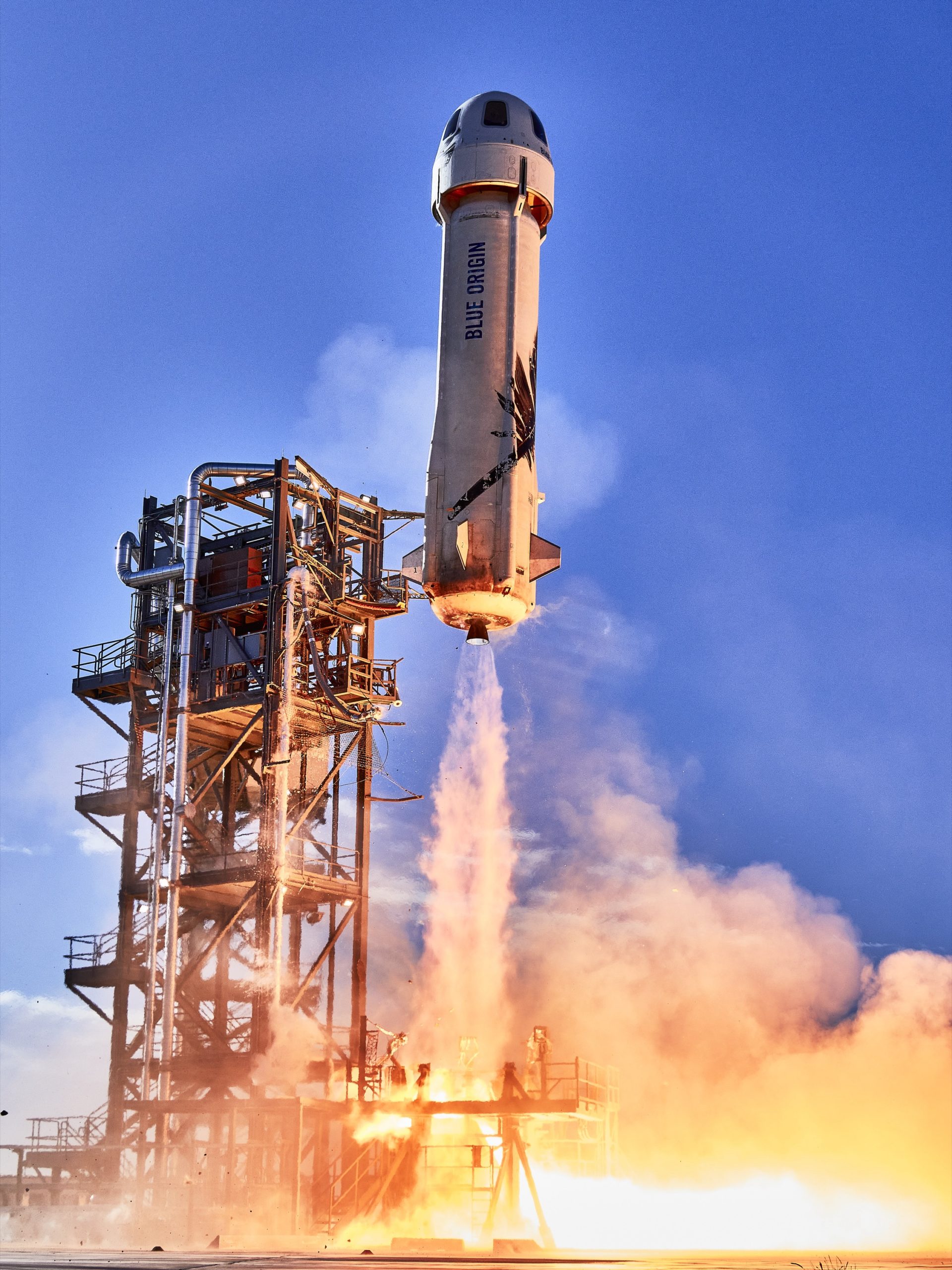
Shatner is renowned world wide famous for his portrayal of Captain James T. Kirk as commanding officer aboard the fictional starship USS Enterprise in numerous fictional space adventures in the original version of the breakthrough science fiction TV series Star Trek which spawned a worldwide cultural phenomenon and multiple follow-on TV shows and 7 movies since it originally premiered in 1966.
“What you have given me is the most profound experience I can imagine,” Shatner told Bezos, with tears in his eyes grateful for the opportunity which was gifted to him by Bezos.
“I’m so filled with emotion about what just happened. I just, it’s extraordinary, extraordinary. I hope I never recover from this, I hope that I can maintain what I feel now, I don’t want to lose it.
“It’s so, so much larger than the me and life. It hasn’t got anything to do with a little green planet, a blue orb, it has to do with the enormity and the quickness and the suddenness of life and death. Oh my God.”
After several unexpected holds to complete the rocket readiness verification reviews ans seating of the crew aboard the crew capsule liftoff took place at 9:49 a.m. CDT / 10:49 a.m. EDT / 14:49 UTC from Launch Site One in remote West Texas near the town of Van Horn.
The Blue Origin mission dubbed NS-18 counts as only the second trip of the new suborbital commercial rocket and capsule built by Blue Origin following the inaugural flight with Bezos himself in July.
“This was the voyage of the RSS First Step today. Its mission: encounter Earth from incredible views at apogee,” Blue Origin tweeted.
The NS-18 flight included four crew members, Dr. Chris Boshuizen, Glen de Vries, Audrey Powers, and William Shatner, as well as thousands of postcards from Blue Origin’s foundation, Club for the Future.
Inside the New Shepard capsule they reached an altitude of 66 miles (107 km) while traveling at a top speed of some 2235 mph (3597 km/h).
They experienced weightlessness for up to 4 minutes – and the sight of the beautiful and fragile Earth and its curvature and gazing into the blackness and vastness of outer space.
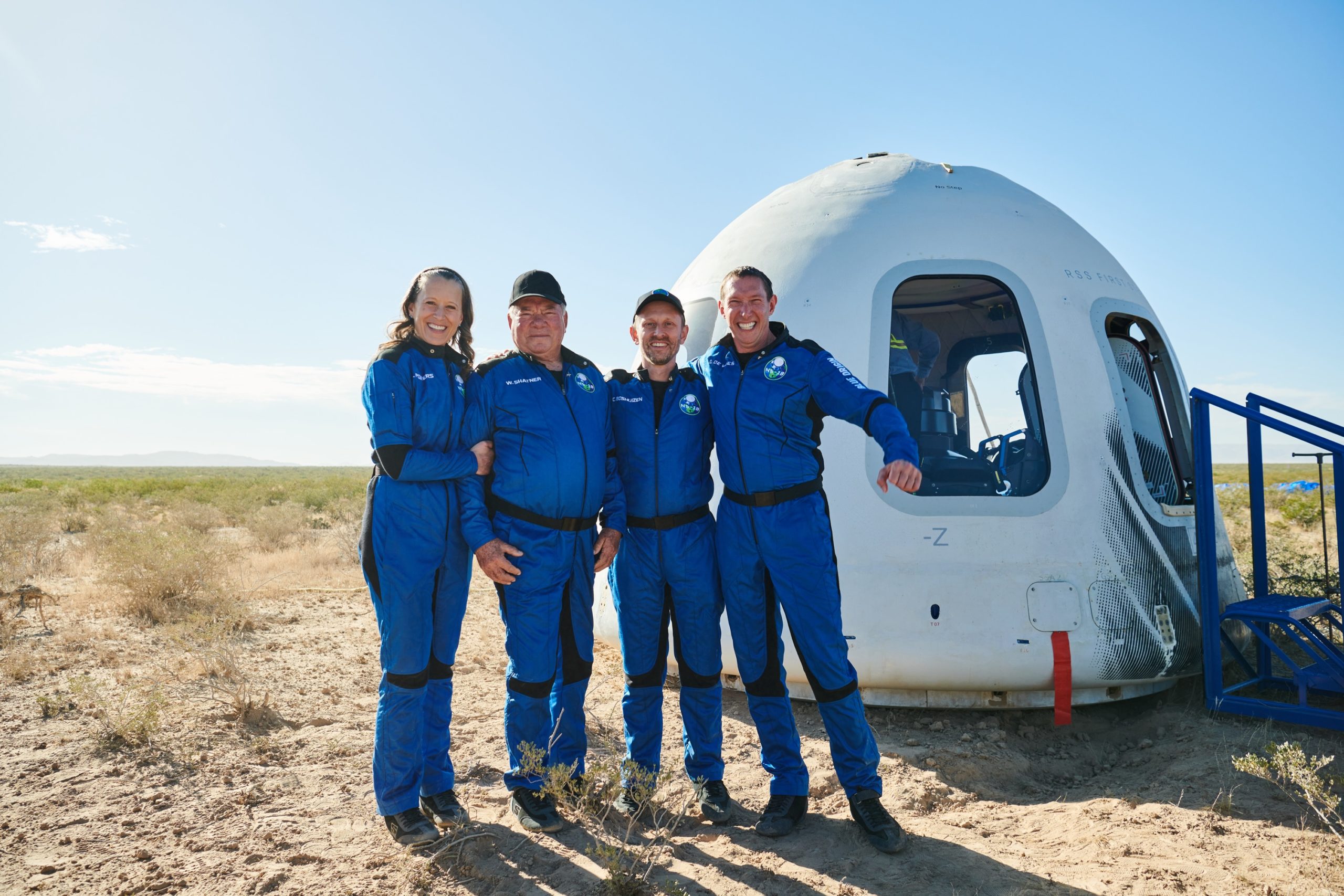
Blue Origin successfully completed New Shepard’s first human flight on July 20 with four private citizens onboard including Billionaire Jeff Bezos, his brother Mark Bezos, aviation pioneer Wally Funk and Dutch teenager Oliver Daemen.
New Shepard’s first human flight launched at 9:12 a.m. EDT on July 20th from Blue Origin’s rocket test site facility near Van Horn in West Texas — coinciding with the 52nd anniversary of the first human Moon landing by NASA’s Apollo 11 crew in 1969.
The crew of the Bezos brothers, Funk and Daemen all officially became astronauts when they passed the Kármán Line, the internationally recognized boundary of outer space 62 miles (100 km) above Earth with no discernable atmosphere.
Blue Origin is planning one more crewed flight this year, along with several additional crewed flights slated for 2022.
Blue Origin has also opened a website for those wishing to apply to fly on New Shepard.
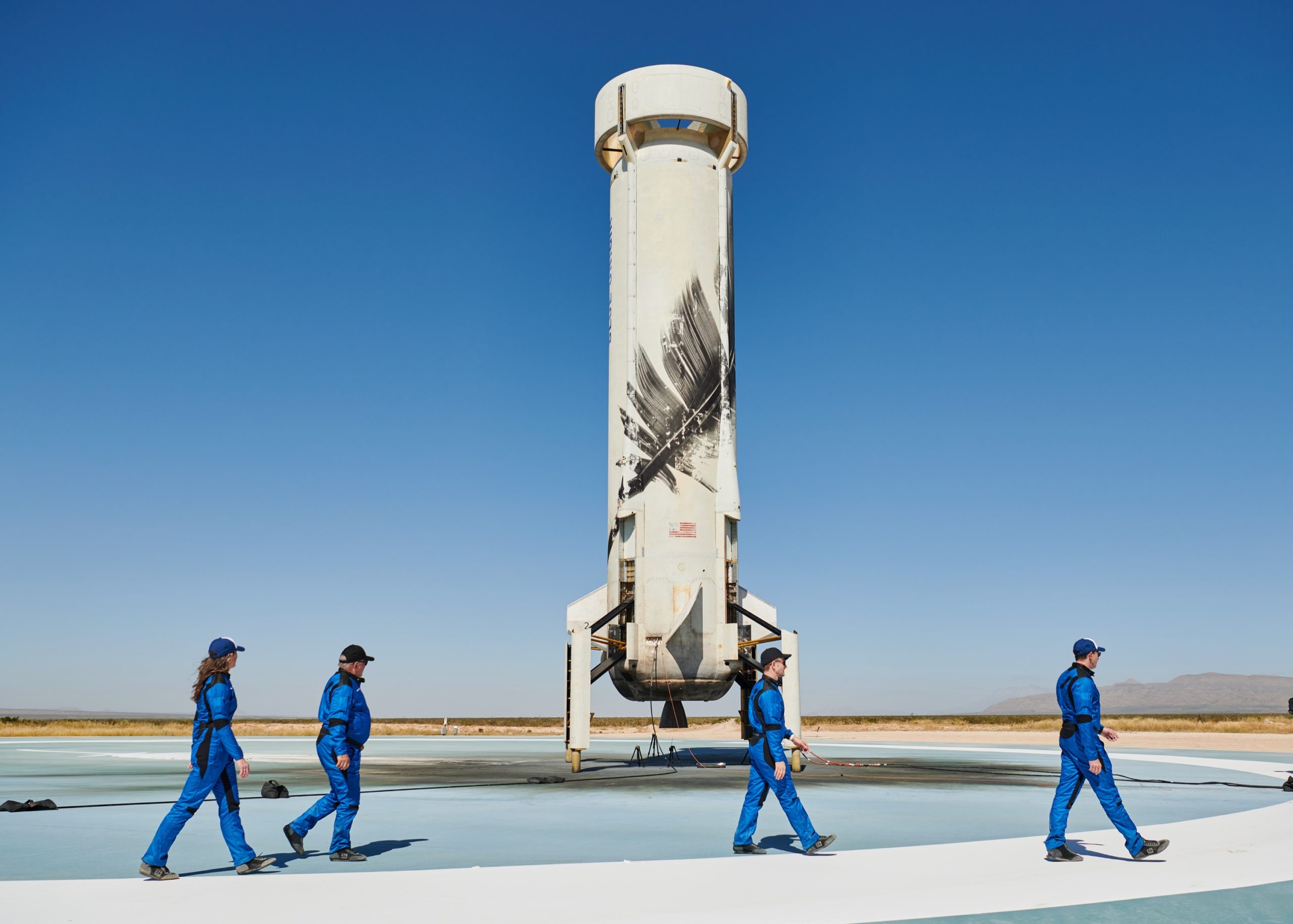
Here are some key mission statistics from the NS-18 mission released by Blue Origin:
- Crew capsule apogee: 347,539 ft AGL / 351,186 ft MSL (106 km AGL / 107 km MSL)
- Booster apogee: 347,160 ft AGL / 350,807 ft MSL (106 km AGL / 107 km MSL)
- Official launch time: 9:49 AM CDT / 14:49 UTC
- CC Landing Time: 9:59 AM CDT / 14:59 UTC
- Mission elapsed time: 10 min 17 sec
- Max ascent velocity: 2,235 mph / 3,597 km/h
I’m a big fan of Star Trek since the original series premiere in 1966 which ran for 3 seasons until it was cancelled by dumb NBC network executives in 1969. I was inspired by NASA and Star Trek to become a research scientist.
Another safe landing in the West Texas desert. What a day, congrats to the crew of #NS18. pic.twitter.com/j0LjGc8yoW
— Blue Origin (@blueorigin) October 13, 2021

